Obon Holiday Japan, also known as the Bon Festival, is one of the most meaningful holidays in the country. It is a time for families to honor their ancestors, reunite with loved ones, and celebrate spiritual traditions that have been preserved for centuries. Beyond its religious roots, Obon has become a vibrant summer event filled with rituals, performances, and festive gatherings. For travelers and residents alike, Obon Holiday Japan represents both a cultural and spiritual highlight of the year.
Finding a place to live in Japan can be especially difficult for newcomers, particularly around busy holiday periods like Obon, when demand rises and available listings can quickly disappear. The complexity of the rental process, from guarantor requirements to language barriers, often adds extra stress. This is where Arealty makes a difference. Whether you’re relocating during Obon Holiday Japan or at any other time, A-Realty is here to ensure a smooth, stress-free experience.
History and Cultural Roots
The origins of Obon trace back to Buddhism, which was brought to Japan more than five centuries ago. The tradition is rooted in the Buddhist story of a disciple who sought to ease the suffering of his deceased mother, eventually giving rise to rituals of remembrance and gratitude. From this tale grew the belief that ancestral spirits return to the human world once a year to visit their loved ones.
During Obon, families welcome these spirits by lighting lanterns at their doorsteps, placing offerings of food, flowers, and incense, and cleaning ancestral graves. These acts are not only religious duties but also expressions of filial piety and respect for lineage. In rural communities, elders often share stories of past generations, keeping family history alive through oral tradition.
As centuries passed, Obon evolved beyond a purely Buddhist observance. Local practices and Shinto influences blended with Buddhist teachings, shaping a festival that reflects Japan’s cultural diversity. Today, Obon is both a spiritual and social event, an opportunity for families to reconnect, for communities to gather, and for traditions to be passed down to younger generations. The combination of sacred rituals and joyful festivities has made Obon one of the most enduring and beloved celebrations in Japanese society.
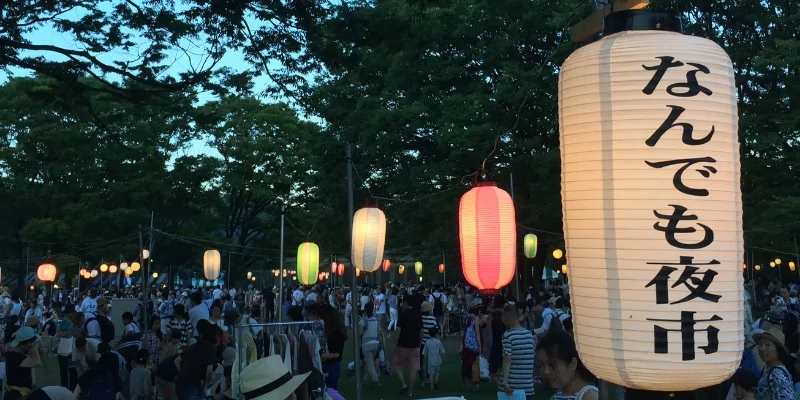
When is Obon Celebrated?
Obon usually falls in mid-August, although certain regions, including Tokyo and parts of eastern Japan, observe it in July due to differences in the lunar calendar. The event traditionally spans three days, beginning with preparations at home such as setting up family altars, arranging offerings, and decorating with lanterns.
This is followed by visits to cemeteries, where relatives clean gravestones, burn incense, and pray together. Local communities also organize dances, parades, and cultural activities that bring residents and visitors together.
Because Obon coincides with summer holidays, it is also considered one of the busiest travel seasons of the year. Millions of people leave the cities to return to their hometowns, creating a nationwide migration similar to Golden Week or New Year’s. Trains, buses, and highways become crowded as families make their way back to reconnect with parents and grandparents.
For many Japanese, this annual journey is not only about honoring ancestors but also about strengthening ties with living relatives, sharing meals, and celebrating traditions handed down through generations.
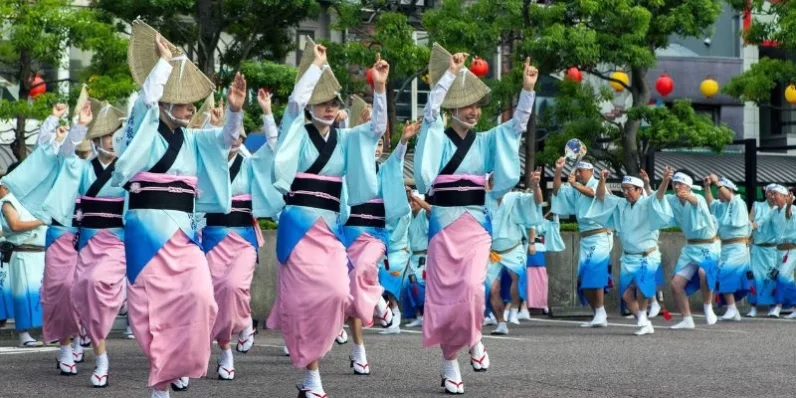
Traditions and Customs
During Obon, families carefully clean their household altars, arrange fresh flowers, and prepare seasonal dishes as offerings to honor ancestors. Plates of fruit, rice, and sweets are often placed alongside incense sticks, creating a welcoming space for visiting spirits. At the entrance of the home, lanterns known as mukaebi are lit to guide ancestors back to the family household, symbolizing light that connects the living with the departed.
Grave visits are another essential part of the festival. Relatives gather at cemeteries to tidy tombstones, offer prayers, and burn incense. These acts not only express respect for the deceased but also strengthen bonds among family members, as multiple generations often participate together. It becomes a moment of reflection, gratitude, and shared remembrance.
When Obon draws to a close, families and communities take part in the moving ceremony of toro nagashi, in which paper lanterns are floated down rivers, lakes, or the sea. The glowing lights drifting across the water represent ancestral spirits returning peacefully to the afterlife. This poignant ritual combines beauty with symbolism, leaving participants with a sense of serenity and spiritual connection that lingers long after the festival ends.
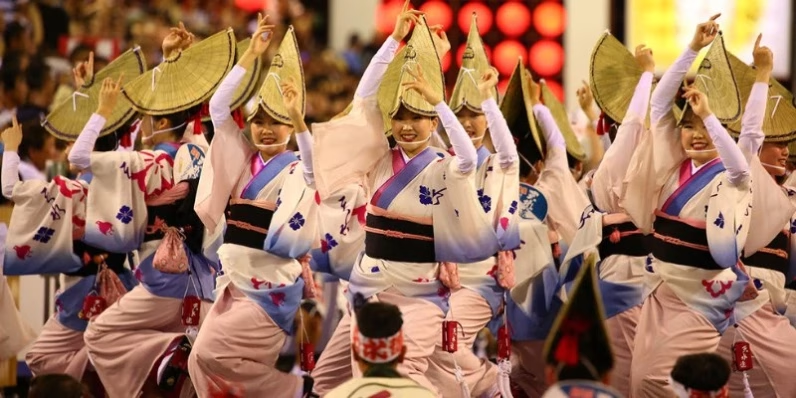
Obon Dances and Performances
One of the most iconic highlights of Obon is Bon Odori, the traditional summer dance that fills the evenings with rhythm and color. These dances are usually held in open spaces such as temple grounds, public squares, or local parks, where a central stage called a yagura is set up for musicians and drummers.
Participants, often dressed in bright yukata, gather around the stage and move in unison, forming circles that symbolize harmony and continuity across generations.
The steps of Bon Odori vary by region, reflecting local history and customs. In some areas, the movements are slow and graceful, while in others, they are lively and energetic, accompanied by unique folk songs and chants.
The deep, resonant beats of taiko drums create an atmosphere that is both festive and spiritual, reminding everyone of the connection between the living and their ancestors.
What makes Bon Odori truly special is its inclusivity. Anyone, whether local or visitor, is encouraged to join, regardless of age or dance experience. Children, parents, and grandparents often dance side by side, embodying the sense of gratitude and togetherness that defines Obon.
For travelers, stepping into the circle offers not only entertainment but also a meaningful way to connect with Japanese culture and community spirit.
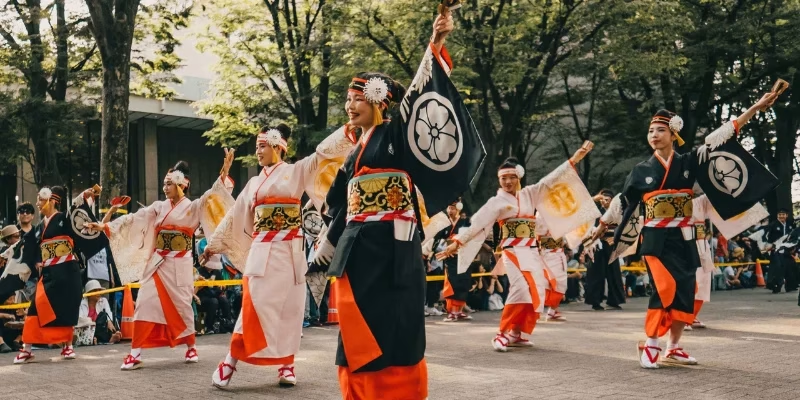
Regional Variations
Communities across Japan celebrate Obon with distinct customs. Kyoto hosts the spectacular Gozan no Okuribi, where giant bonfires shaped like characters are lit on surrounding mountains. In Tokushima, the energetic Awa Odori dance attracts thousands of performers and visitors. Meanwhile, rural towns maintain more intimate, family-focused observances.
Food and Festive Atmosphere
Dishes tied to the seasons carry great importance. Families prepare vegetarian offerings, fruits, and sweets for ancestors, while festival stalls serve summer favorites like yakisoba, takoyaki, and shaved ice. Lanterns, music, and laughter fill the streets, turning Obon into both a spiritual and joyful summer tradition.
Travel Tips for Visitors
For travelers, Obon provides one of the most authentic opportunities to immerse themselves in Japanese culture. The festival transforms towns and cities into lively spaces filled with music, dance, and vibrant decorations, allowing visitors to experience traditions that have been preserved for centuries.
destinations include Kyoto, where the dramatic Gozan no Okuribi bonfires light up the mountains; Tokushima, famous for the energetic Awa Odori dance; and Tokyo, where community Bon Odori events are held in parks and temples throughout July and August.
Since Obon coincides with one of Japan’s busiest travel seasons, trains, buses, and highways often become crowded, and hotels fill up quickly. To avoid last-minute stress, it is wise to arrange accommodation and secure transportation well in advance. Travelers who plan early not only ensure a smoother trip but also gain the chance to stay closer to key festival sites.
Participating in local customs adds even more value to the journey. Wearing a summer yukata, joining circle dances with residents, and tasting seasonal street food such as takoyaki, yakisoba, or shaved ice can turn a simple visit into an unforgettable cultural experience. Beyond sightseeing, Obon offers the rare chance to share in Japan’s spirit of remembrance, community, and celebration.
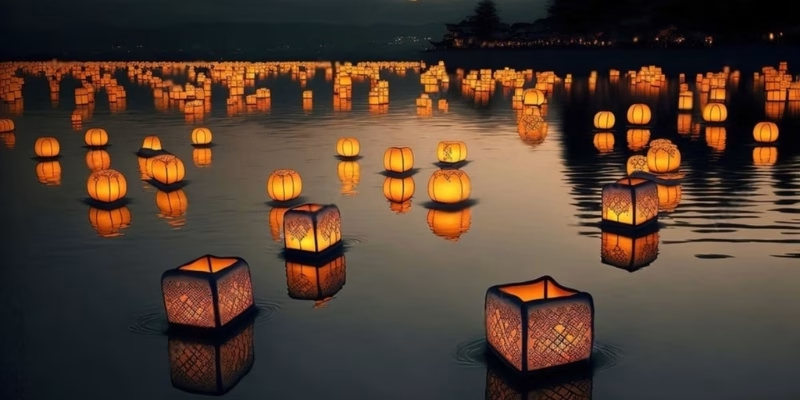
Modern Significance
In today’s fast-paced society, Obon remains a powerful reminder of family bonds and cultural identity. Even younger generations, who may live far from their hometowns, return for this special occasion. By blending tradition with modern lifestyles, Obon continues to connect past, present, and future in meaningful ways.
Seamless Relocation to Japan with Arealty
For many expats, securing accommodation in Japan can feel overwhelming. Complicated rental procedures, guarantor demands, and language challenges often create unnecessary pressure. With the right guidance, however, the journey becomes far more straightforward and stress-free.
Why partner with Arealty?
- Multilingual support: Communicate easily in English, Japanese, and Vietnamese.
- Local expertise: Extensive understanding of Japan’s housing market and the needs of foreigners.
- Comprehensive service: Assistance at every step, from property search to lease signing and move-in.
- Transparent approach: Clear communication built around putting clients first.
With Arealty’s support, finding a place to live in Japan is no longer complicated, you can focus on settling into your new life with ease and confidence.
Hotline: 050-6864-9697
Website: https://arealty.jp
Conclusion
The Obon Holiday Japan is more than just a summer event, it is a heartfelt celebration of heritage, family, and community. Through traditional rituals, lively dances, and vibrant gatherings, Obon highlights the essence of Japanese culture and the importance of connection. For visitors and newcomers alike, it offers not only a spiritual experience but also a unique glimpse into the country’s traditions and values.
Ready to start your own journey in Japan? Contact A-realty today to find the perfect apartment, transparent, reliable, and cost-effective.

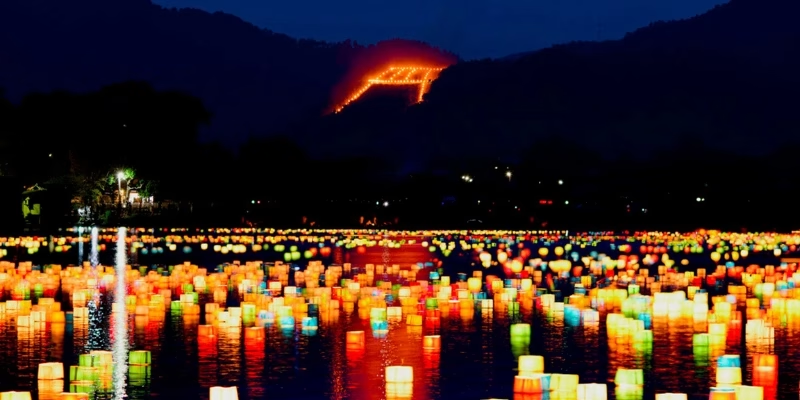




Leave a Reply